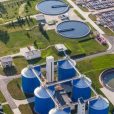Despite what it may look like, investing in biotechs is more science than art. The sector holds intrinsically higher risk, but investing in it can be well worth it to those willing to take the plunge. In fact, over the last twenty years biotech firms have outperformed the S&P 500 and both the medtech and pharmaceutical sectors, delivering shareholder returns of over USD $1.7 trillion.
But before you go sink all your money into some small cap biotech with major Theranos vibes, you might want to do your homework. Investors have a unique challenge when it comes to biotech investing. Not only do you have to be fluent in finance speak but you also have to navigate scientific jargon, drug development timelines and complex competitor landscapes to understand the ins and outs of a company, before you hand over your hard earned cash.
Oncology is one field of medical research that is gaining more and more traction as our population skews older, resulting in an increase in cancer rates over the coming years. With an estimated 1,700 clinical compounds in development, oncology drugs make up one third of the world’s clinical pipeline across all therapeutic areas.
The commercial incentive for drug developers is significant. Sales for therapeutics in the global oncology market are forecast to hit $250 billion by 2024. Oncology is expected to represent 26% of all pharmaceutical sales by the end of 2022.
There are many companies working towards solutions for oncology’s biggest questions and area of highest unmet need, and not just the pharmaceutical giants. The ASX is home to many smaller companies with equally promising clinical pipelines, offering investors the chance to get in on the ground floor of a potentially high value medicine.
Anti-fibrotics in cancer
Clinical stage drug development company Pharmaxis (ASX: PXS) are leaders in the field of fibrosis, a disease mechanism that is present in many cancers. The Company’s lead asset in development is PXS-5505, an antifibrotic medication currently in Phase 2 clinical trials for rare bone marrow cancer, myelofibrosis. The drug works by inhibiting lysyl oxidase enzymes which are essential in the formation of scarring, a key process in myelofibrosis. Scar tissue build up results in the disruption of normal blood cell production leading to reduced immunity, bleeding issues and poor patient outcomes. Patients diagnosed with myelofibrosis have a life expectancy of 5 years, and many go on to develop leukaemia.
The current standard of care for myelofibrosis is treatment with a class of drugs called JAK inhibitors. Incyte’s Jakafi (ruxolitinib) has dominated the market since its launch in 2011, however JAK inhibitors are not a silver bullet. Whilst effective at reducing spleen size and improving disease-related symptoms JAK inhibitors are not suitable for every patient and do not meaningfully address the underlying cause of disease. JAK inhibitors and myelofibrosis treatment represents a USD $1 billion market opportunity.
PXS-5505 has cleared Phase 1c safety trials in myelofibrosis patients and is now in Phase 2 trials at multiple international sites. In preclinical models, the drug has been demonstrated to be disease modifying, and potentially curative.
In a vote of confidence from the US FDA, PXS-5505 has been granted both Investigational New Drug and Orphan Drug status, and is being backed by renowned institutional biotech funds such as Karst Peak.
Investigator initiated studies of PXS-5505 in other indications like pancreatic and liver cancer have proven that the drug can break down fibrotic tissue in solid tumours. PXS-5505 is also due to shortly commence a Phase 1c/2a trial for liver cancer following preclinical work by researchers at the University of Rochester, New York.
Using the immune system to fight cancer
The immune system is one of the body’s most complex systems with the ability to harm or help. Researchers are growing increasingly interested in using the system to help treat cancer by engaging the patient’s own immune system to recognise and destroy cancer cells.
Chimeric Therapeutics (ASX: CHM) is a clinical stage cell therapy company seeking to harness the power of specialised T cells to fight cancer.
Cell therapy involves transferring intact, live cells into a patient. Chimeric’s chimeric antigen receptor (CAR) T Cell therapy draws blood from the patient and reprograms the immune cells to detect and fight cancer cells before being infused back into the patient to carry out the work.
Lead asset CHM1101 is in Phase 1 clinical trials to evaluate CAR T cells combined with a chlorotoxin tumour-targeting domain for patients with recurrent or progressive glioblastoma (brain cancer). Chlorotoxin is derived from the deathstalker scorpion’s venom, and has tumour targeting properties. This approach has seen CHM1101 be able to more broadly target glioblastoma cells than other immunotherapy targets.
Imugene (ASX: IMU) is another prolific immuno-oncology company using their proprietary T cell analogues, called OnCARlytics to work with engineered specialised immune cells which are directed to detect tumours through engineered receptors. These are already in use for blood based malignancies, with Novartis’ Kymriah and Gilead’s Yescarta however, these don’t have the same efficacy with solid tumours. By using an oncolytic virus as a trojan horse, researchers have been able to penetrate the tumour cell and deliver CAR T cells directly which are then capable of destroying the tumour cells.
With many indications still with significant unmet need there is massive potential for emerging novel therapies. The commercial opportunities within the space will see increased competition amongst drug developers vying for market share which will require investors to be more discerning than ever. Companies with a robust pipeline, solid science with cash in the bank, and investment from notable biotech funds are ones to watch. Whilst daunting (at first) a bit of research, reading and Google alerts will hold you in good stead, and who knows, you may be on the side of innovation and hugely transformative potential.
For an in depth report on these companies and more, you can download our special biotech investing report by registering in the form below.
- Parkinson’s UK backs Pharmaxis with $5 million to slow the onset of incurable disease with ‘ground breaking’ trial - September 1, 2022
- How this company is developing medtech to support Indigenous community health - August 22, 2022
- A round of ap-paws for PharmAust, changing the ruff prognosis for dogs with lymphoma - August 17, 2022













Leave a Comment
You must be logged in to post a comment.